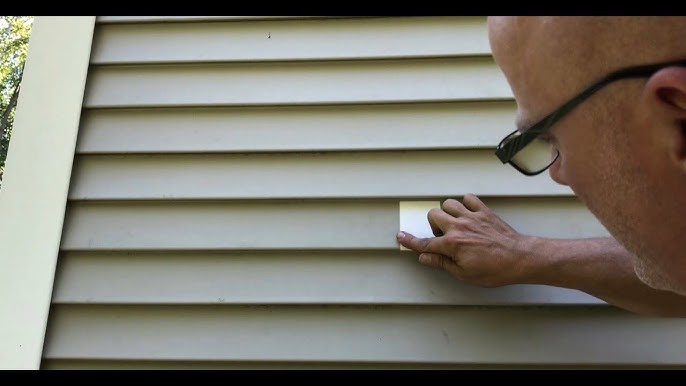Vinyl siding is a popular choice for homeowners due to its durability, low maintenance, and ability to withstand the elements. However, over time, it may develop holes or damage, which can compromise its effectiveness. Fortunately, repairing a hole in vinyl siding is a manageable DIY project that can save you money and protect your home's exterior. In this comprehensive guide, we'll walk you through the step-by-step process of fixing a hole in vinyl siding. Wikipedia.org
Materials and Tools You'll Need
Before you get started, it's essential to gather the necessary materials and tools. Here's a list of what you'll need:
- Replacement Vinyl Siding: You should have a matching piece of vinyl siding to replace the damaged section.
- Utility Knife: A utility knife is essential for cutting and shaping the siding.
- Pry Bar: A pry bar will help you remove any damaged or loose pieces of vinyl siding.
- Caulk Gun: You'll need a caulk gun to apply exterior-grade caulk to seal the repaired area.
- Hammer: A hammer is handy for reattaching siding and nails.
- Level: A level will ensure that your repairs are straight and even.
- J-Channel or Trim Pieces (optional): You might need J-channel or trim pieces to finish the repair professionally. Read more about how to fix a hole in vinyl siding
Step 1: Prepare the Work Area
Begin by inspecting the damaged area and assessing the extent of the damage. If the hole is relatively small and limited to one panel of siding, repairing it is straightforward. If there is extensive damage or multiple holes, consider contacting a professional for assistance. Ensure your work area is clean, safe, and free from obstructions.
Step 2: Remove the Damaged Siding
Using a pry bar, gently lift the piece of vinyl siding directly above the damaged area. Be cautious not to damage the adjacent pieces of siding. Once the panel above the damaged section is out of the way, you can access the damaged piece more easily.
Next, locate the nails securing the damaged section and carefully remove them. Keep the nails in good condition, as you'll reuse them during the repair.
Step 3: Cut Out the Damaged Section
With the damaged siding removed, measure the area you need to replace. Use a level to ensure straight and precise cuts. Mark the measurements on your replacement piece of siding, and use a utility knife to cut out the damaged section. Make sure the replacement piece is slightly larger than the hole to allow for proper fitting.
Step 4: Prepare the Replacement Siding
To ensure a snug fit and a seamless repair, you may need to trim the replacement siding piece further. Place it in the hole, and trim the edges as needed to match the contour of the surrounding siding. It's essential that the replacement piece fits perfectly to avoid gaps or bulges in your siding.
Step 5: Attach the Replacement Siding
Slide the trimmed replacement piece into the hole, making sure it aligns with the surrounding panels. Reattach it using the same nail holes from the original siding. Use your hammer to secure the nails, ensuring that the replacement piece is snug and flush with the adjacent siding.
Step 6: Seal the Repair
Once the replacement piece is securely in place, it's time to seal the repair. Apply a bead of exterior-grade caulk around the edges of the replacement siding to prevent water and debris from infiltrating the seam. Make sure the caulk is smooth and evenly distributed to ensure a tight seal.
Step 7: Reinstall the Panel Above
Carefully reattach the panel of siding that you removed in Step 2. Slide it back into place, making sure it interlocks correctly with the repaired section. Secure it with nails, being mindful not to overdrive them and cause damage to the vinyl.
Step 8: Finish and Clean
If the repaired section of vinyl siding looks slightly different from the rest of the house, you may want to consider installing J-channel or trim pieces to create a more polished finish. These elements can also help cover any visible gaps or seams.
Finally, take a moment to clean the repaired area and inspect your work to ensure that the hole is properly sealed, the siding is straight and level, and everything looks well-maintained and tidy.
Conclusion
Fixing a hole in vinyl siding may seem like a daunting task, but with the right materials, tools, and a systematic approach, it's a manageable DIY project for homeowners. Properly addressing small holes and damage in your vinyl siding can prevent more extensive problems in the future and maintain the aesthetic appeal of your home's exterior. Remember that it's essential to use the same type and color of vinyl siding to ensure a seamless repair. By following the step-by-step guide outlined above, you can confidently tackle this project and keep your home looking its best. Visit official website onlyroofing.com

